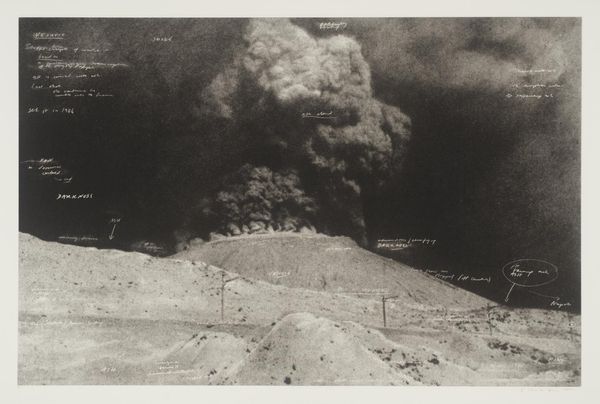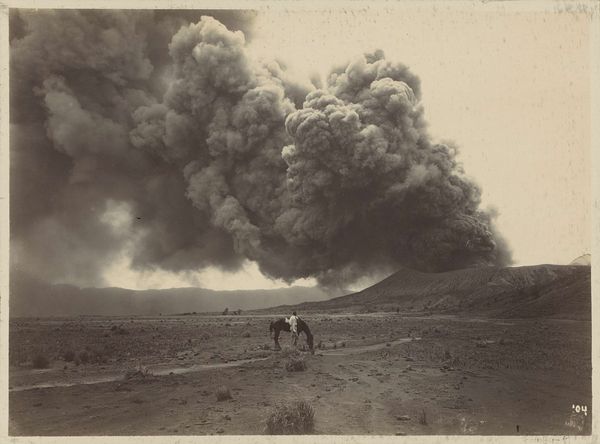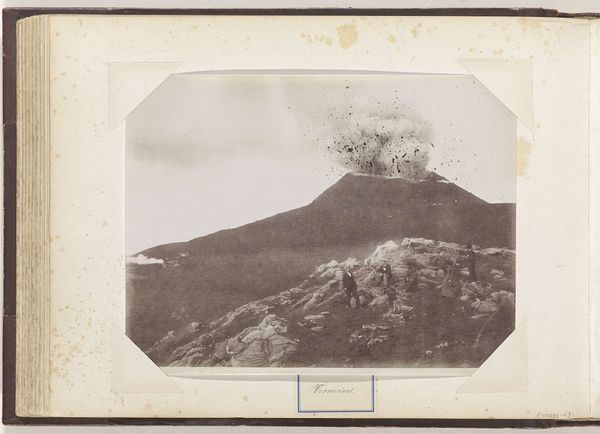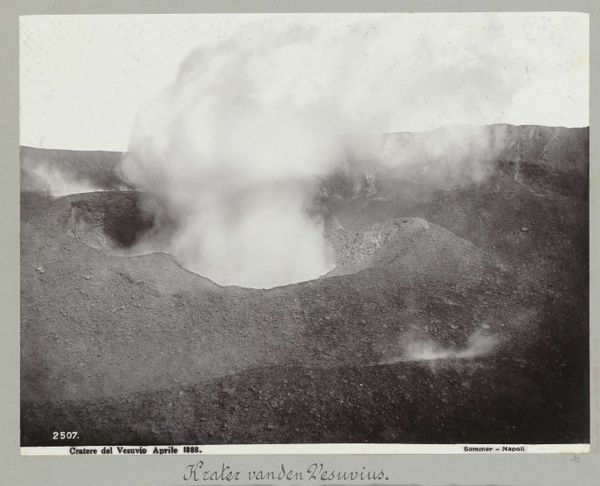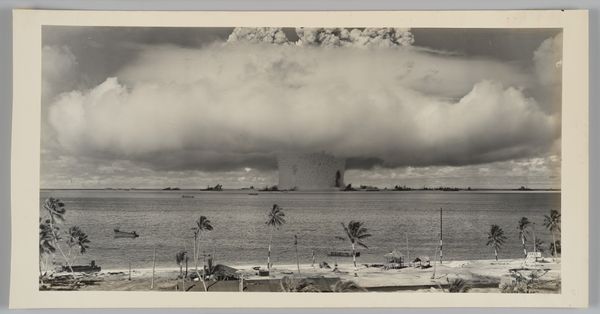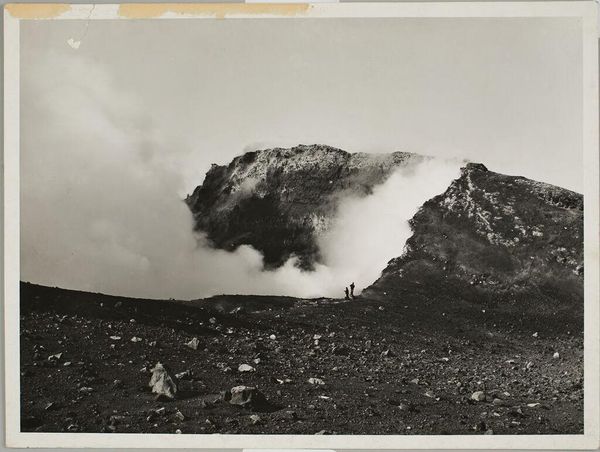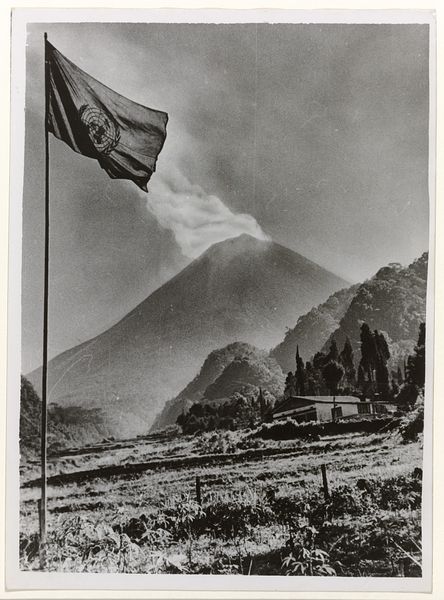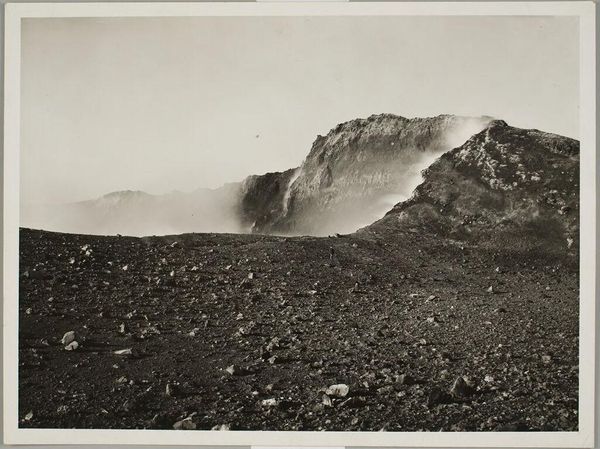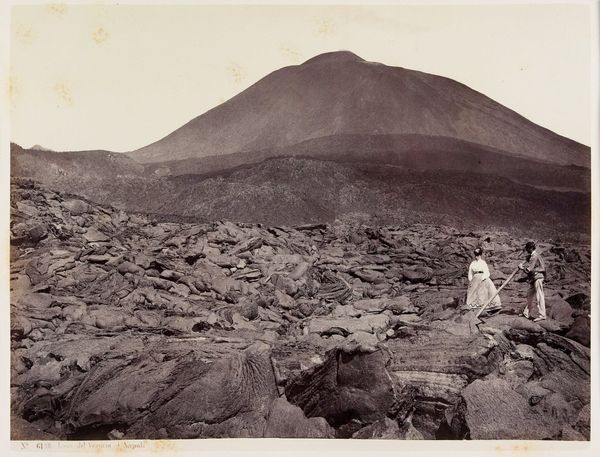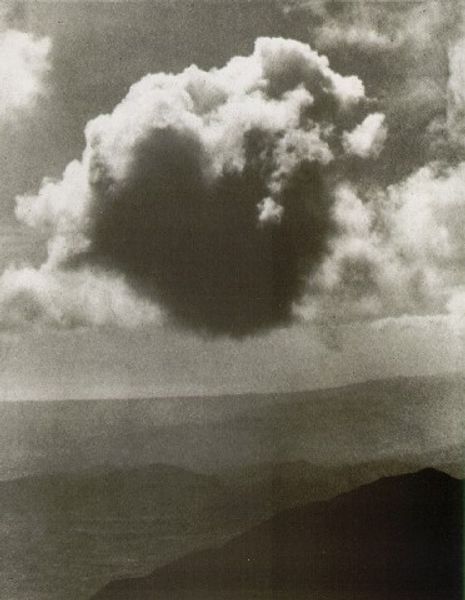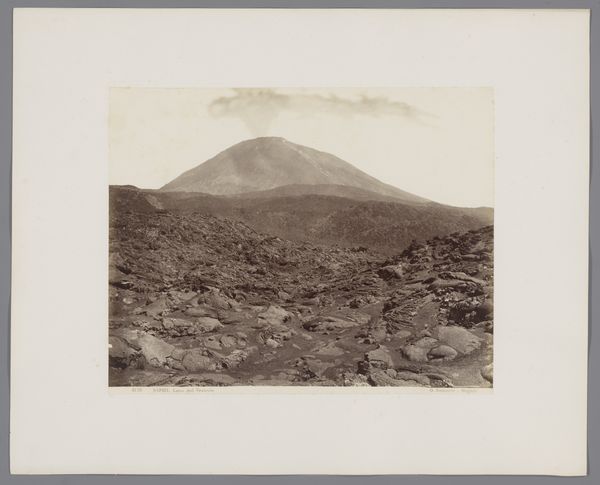
Dimensions: 7 1/8 x 9 3/8 in. (18.1 x 23.81 cm) (image)
Copyright: Public Domain
Curator: Let's discuss Giorgio Sommer's "L'Eruzione del Vesuvio," an albumen print taken in 1872, currently held at the Minneapolis Institute of Art. Editor: My first impression is one of stark contrast. The almost ethereal plume against the stoic silhouette of the volcano creates an imposing and rather dramatic image. It really captures the sublime terror of nature. Curator: It's compelling to view this work through the lens of Romanticism, which, as a movement, was grappling with industrialization and the reassertion of nature’s power. Consider how photography, a relatively new medium then, intersected with scientific observation and romantic aesthetics. Was this an attempt to document, to aestheticize, or perhaps both? And who had access to these images, and what impact did the wide dissemination of photos of such events have on shaping European identity? Editor: That's an excellent point about access. In terms of symbolism, volcanoes have always represented upheaval, transformation, both destruction and creation. Here, the image invites a meditation on the human relationship with the landscape – are we dominating it, or are we perpetually at its mercy? I wonder, too, if the plume mirrors contemporary depictions of societal anxieties. Curator: Indeed. The photograph documents a specific moment, but also serves as a document of its era. The rise of geological sciences, for example, saw the earth not as static, but as dynamic and ever-changing, shaping our understanding of natural disasters, impacting disaster management, insurance industries, and city planning. These were new concepts at the time that forever changed human interactions with each other and the earth. Editor: Precisely. Also, that ominous cloud does echo imagery we see now connected with pollution and industrial output. Maybe that speaks to the continuous loop we humans find ourselves in—attempting to dominate nature, while at its mercy. Curator: So perhaps we've uncovered layers of meaning within a single, arresting image—from scientific documentation, and aesthetic capturing of the sublime to socio-political anxieties around our fraught relationship with nature, or rather our understanding of human influence on the natural world. Editor: Yes, the interplay of visual symbols reflecting shared memories keeps me intrigued by "L'Eruzione del Vesuvio".
Comments
No comments
Be the first to comment and join the conversation on the ultimate creative platform.

